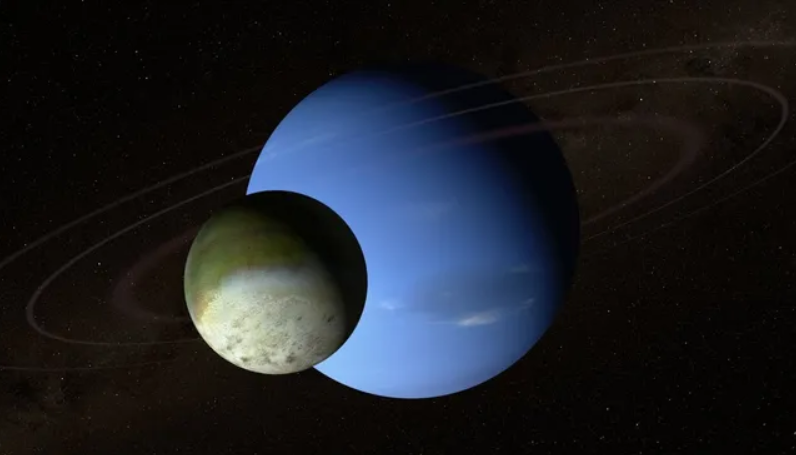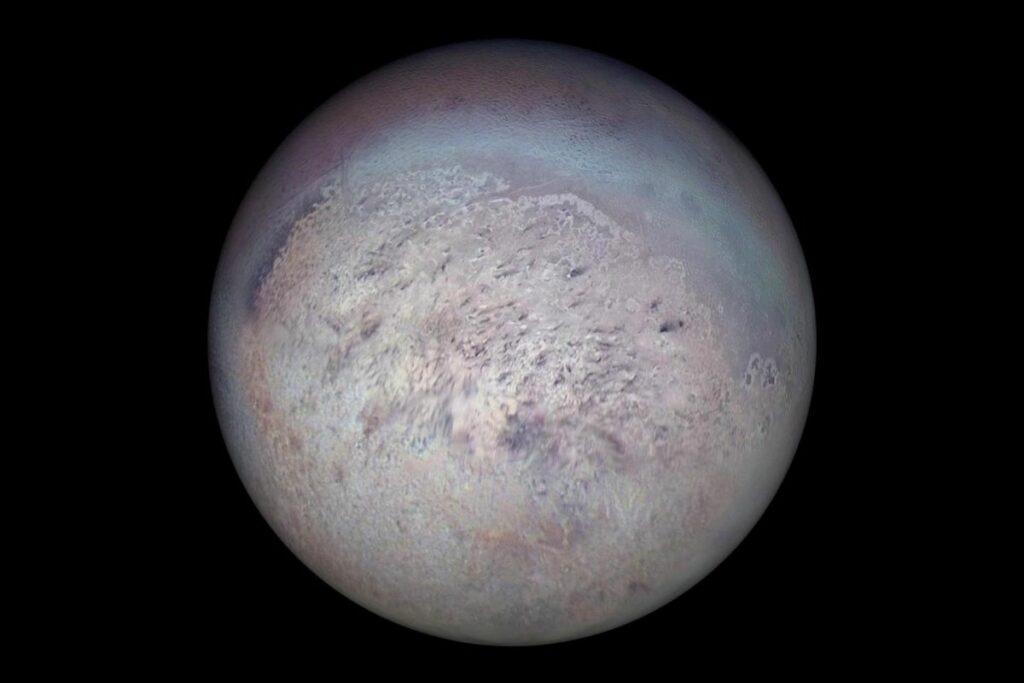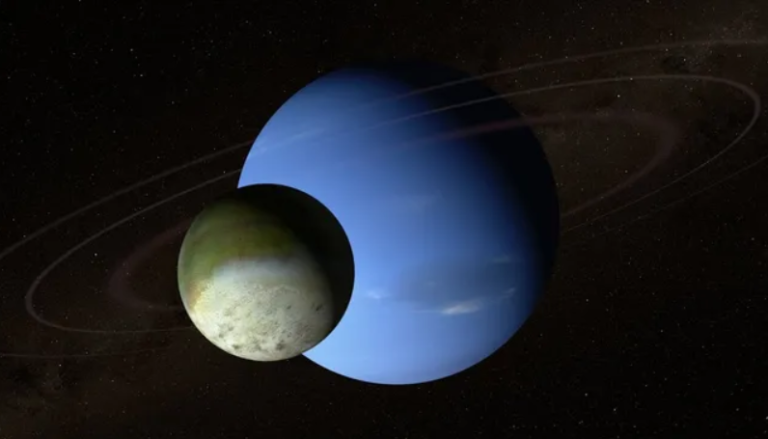Is it Possible for Neptune’s Largest Moon to Alter a Spacecraft’s Trajectory into the Planet’s Orbit?
Scientists Propose Innovative Approach to Attaining Neptune Orbit: Utilizing Triton’s Sparse Atmosphere for Spacecraft Capture

It has been more than four decades since the Voyager 2 probe’s brief encounter with Neptune during its historic tour of the outer solar system. While numerous space missions have been developed in the intervening years, none have ventured as far as Neptune, the solar system’s outermost planet, let alone attempted to orbit it.
The notion of returning to Neptune has long intrigued planetary scientists, but the planet’s immense distance presents formidable obstacles to establishing an orbiter or lander mission. In comparison, the New Horizons spacecraft’s Pluto flyby was relatively brief, and the most distant orbiter sent so far reached Saturn.
Neptune’s staggering remoteness is difficult to grasp, positioned approximately 30 times farther from the sun than Earth. For context, Jupiter is only five times more distant from the sun than Earth. A journey to Jupiter already takes years for an orbiter, but Neptune is five times more distant. Even though Voyager 2 took 12 years to pass by Neptune, it did so without stopping, constituting a markedly distinct mission profile. In 2014, New Horizons conducted a flyby of Neptune and its moon Triton from a distance of about 2.45 billion miles (3.96 billion kilometers) but did not enter orbit around the planet. Establishing orbit around Neptune remains unattainable with current technologies.
One of the challenges facing a return mission to Neptune is that a flyby focused solely on the planet’s exploration would not yield a substantial scientific return. Without the favorable planetary alignments available in the 1970s and ’80s, a new mission would require even more propellant to reach Neptune, offering only marginal additional scientific insights.
Following a successful flyby, the logical progression is toward establishing an orbiter, yet Neptune’s extreme distance presents formidable hurdles. There is currently no viable means to transport a sufficiently large orbiter to the Neptune system, carry adequate fuel for deceleration, and execute the mission within a reasonable timeframe.
Nevertheless, researchers have introduced an audacious concept for surmounting these challenges: exploiting Triton’s tenuous atmosphere, Neptune’s largest moon, to capture a spacecraft.

In a paper published on the arXiv preprint database, the researchers highlighted NASA’s successful completion of the Low-Earth Orbit Flight Test of an Inflatable Decelerator (LOFTID) in 2022. The primary aim of this program was to create an inflatable shield designed to safeguard a spacecraft during its descent through Earth’s atmosphere, enabling a controlled landing.
The researchers put forward a novel idea for a future Neptune orbiter, proposing to target Triton and employ an LOFTID-like device, referred to as an aeroshell, to decelerate the spacecraft. Their findings indicated that Triton’s extremely tenuous atmosphere, with less than 1/70,000th the air pressure of Earth’s atmosphere, could effectively decelerate the spacecraft and facilitate its entry into a stable orbit around Neptune. Moreover, they could manipulate the aeroshell’s angle to fine-tune the orbiter’s trajectory, ensuring it achieved the ideal orbit.
To execute this maneuver successfully, the orbiter would need to descend to an altitude of as low as 6 miles (10 kilometers) above Triton’s surface. While this is only slightly higher than the typical cruising altitude of an intercontinental flight, the absence of significant mountain ranges on Triton (its tallest known peaks barely reach one kilometer) means that the risk of a catastrophic surface collision is minimal.
Similar concepts have been proposed for employing an aeroshell to establish an orbiter around Saturn via its moon Titan. However, Titan boasts a much denser atmosphere, making this approach significantly more manageable. Despite Triton’s exceedingly thin atmosphere, its greater distance from Neptune means that the spacecraft would not be traveling at such high velocities, requiring less deceleration to achieve orbit.
The researchers estimated that, with this aeroshell technique, a mission to Neptune could be completed in as little as 15 years, a significantly shorter duration compared to current mission concepts. Conventional approaches necessitate the orbiter carrying an excessive amount of fuel for deceleration at Neptune, which would ultimately prohibit reaching high velocities, leading to extended mission durations.
An additional advantage of this plan is the opportunity to closely study Triton, one of the solar system’s most enigmatic objects and a likely captured Kuiper Belt object. This approach would enable a close-up examination of Triton from just a few kilometers above its surface, offering valuable scientific insights.
This article is republished from SpaceCom under a Creative Commons license. Read the original article.
Do not forget to share your opinion with us to provide you with the best posts !





0 Comments